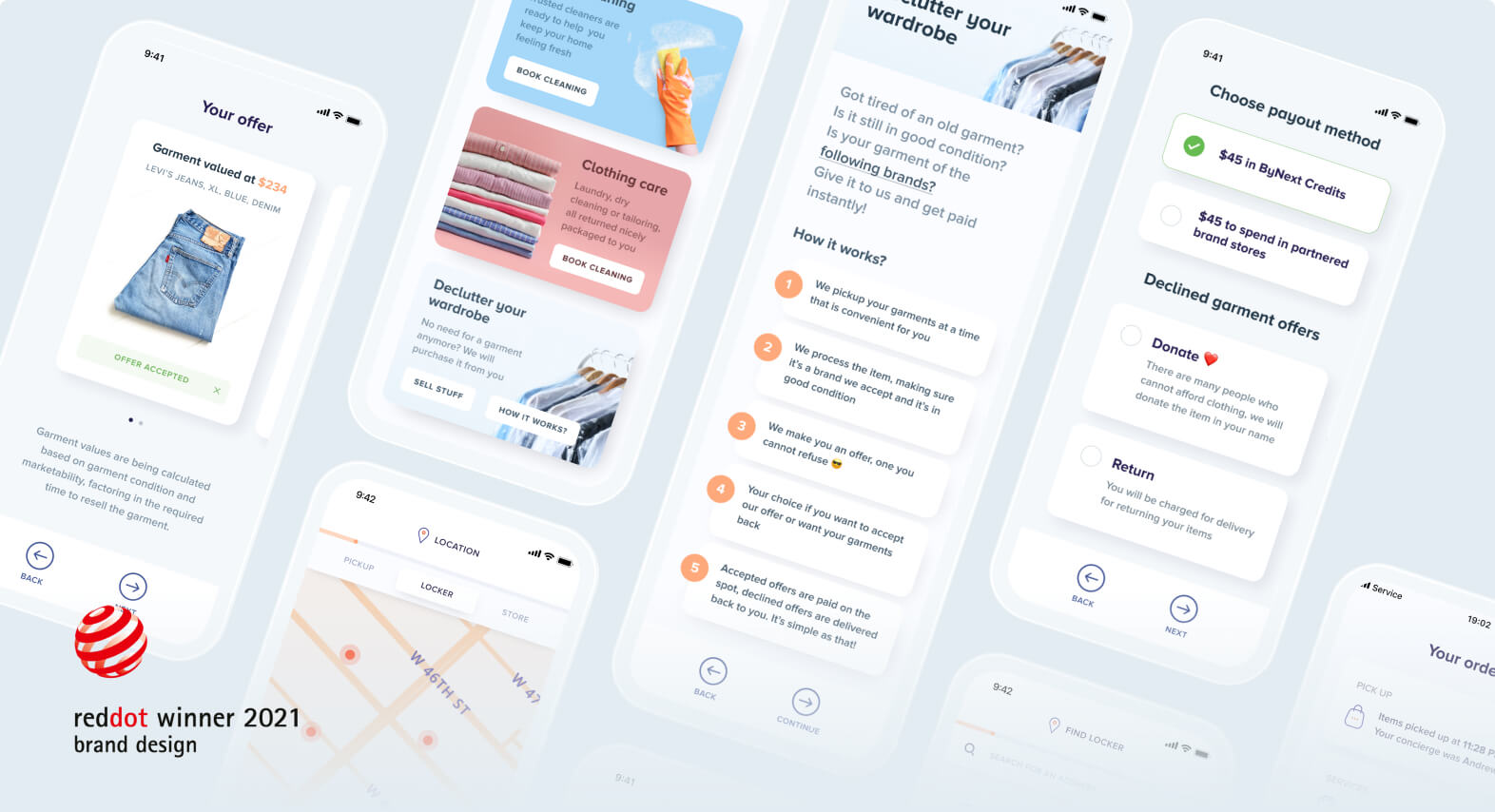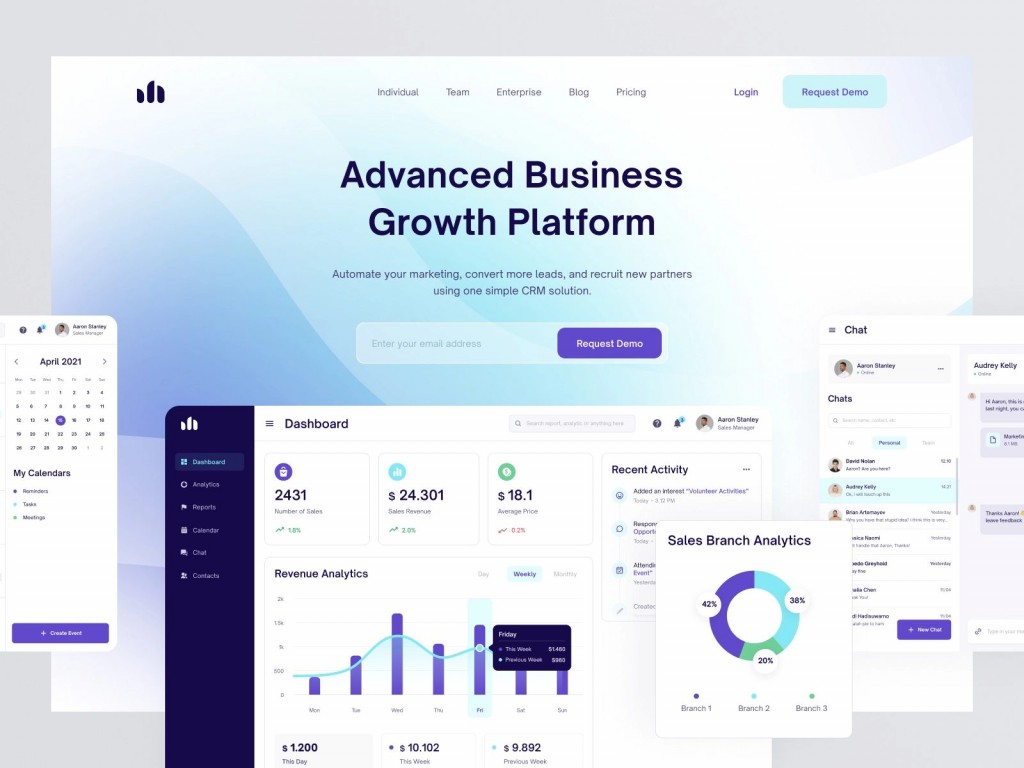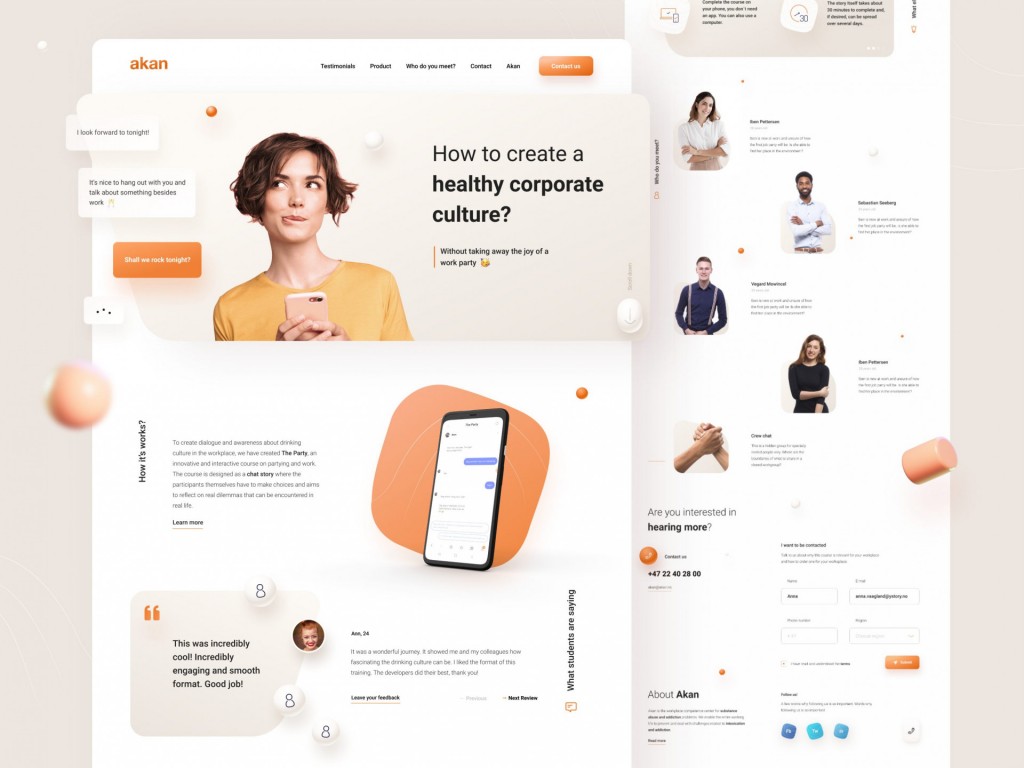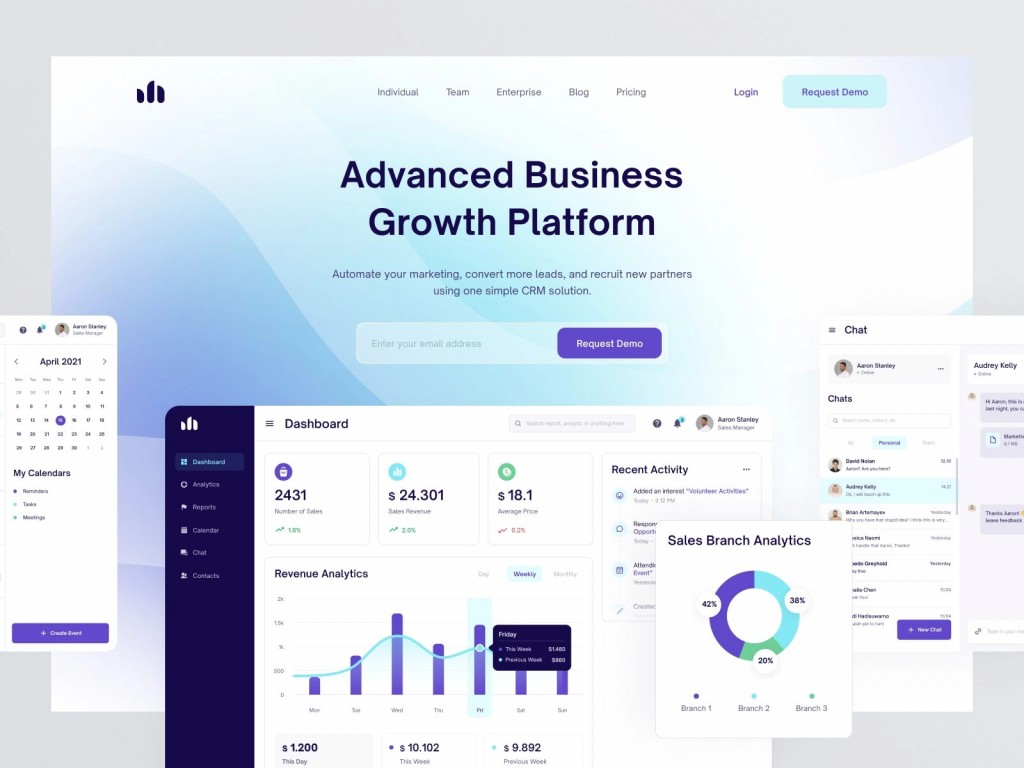Web Design Principles: TOP 10 Principles of Good Website Design
What are web design principles, and do they affect the designing process? This question requires a professional approach and, what’s even more important, expert execution. Quite often, managers underestimate design principles and their impact on business. That’s why it is crucial to understand how they influence the performance of your website.

Any design starts with the good website design idea. Research is the next step. Both are important, but your customers will see only the third step – how the idea and the research are put together in the execution.
Julie Zhuo, the former product designer at Facebook, states that with a good performance, ‘the final product feels like its earlier incarnations come to life in full, vivid color.’ Indeed, the comprehension of the website design principles is not enough. Therefore, in this article, we’re going to make sure that you not only understand the principles but can execute them in your everyday design process.
What Makes Web Design Good and Effective
Do you know how Microsoft describes its design principles? Effortless, calm, personal, familiar, complete + coherent. That’s all! These six words speak for themselves: the design must be accurate and easily understood by the user.
According to Apple, design principles are ‘the key to understanding how design serves human needs for safety, meaning, achievement and beauty.
Because design is the solution to the user experience, it is successful when the user is satisfied. Therefore, all design principles must lead to these results.
Obviously, it’s hardly possible to measure the effectiveness of each design principle. We believe they work all together as a complex of actions made to reach deserved results. But there’s always a space for experiments in design. If you want to put the effectiveness of design principles into numbers, we encourage you to do that. And, of course, we will be glad to become a part of such an analysis.

TOP 10 Principles of Good Website Design to Follow
What are the principles of good web design? There are 10 principles of good website design. However, you can find multiple approaches that highlight different points. Here we’ll cover the most important ones that you can use in your daily design routine.
Visual Hierarchy
Among the basic web design principles, visual hierarchy takes position number one. Why is it so important? Let’s get to the details!
Everything that a user sees on the screen should be subjected to the visual hierarchy. Kissmetrics notice in their research that for 92.6% of users, the visual dimension is the #1 influencing factor affecting their purchase decision.
Users do not need too much time to decide whether they like your website or not. Therefore, you need to impress them from the first seconds. And visual hierarchy is what will help you.
Visual hierarcy encomprasses:
- the proportion of design elements
Let’s imagine: we have three small triangles and a large one. You will pay attention to the big one due to the proportion hierarchy the designer has chosen.
In design, scaling and proportions focus users’ attention on the elements you want them to notice.
- color of elements
Color is another powerful tool to capture the attention of users. Of course, there are some common psychological tricks like red stands for negative and green for positive. Still, in web design principles and elements, visual hierarchy uses colors in combinations (complementary, monochromatic, analogous, triadic, tetradic colors). You can choose the colors and hues with the help of the Color Wheel.
- typography
The words should always make sense. Moreover, the way these words are depicted on the screen can make even a bigger sense. How does that work? In principles of effective web design, typography is responsible for that.
- space
Gone are the days when the web page was full of banners with no free space left. Today, the designers choose to add more space around elements that need to be emphasized. Users also appreciate more ‘airy’ and easy on the eyes visuals. And that works!
- repetition
When working on a future website prototype, designers need to remember that it’s better to repeat some elements than to create new ones. Especially when we’re talking about the important elements like the logo or icons of the services.
Responsive design
Do you still think customers use your site from the desktop? Better check your analytics! The world now has more than 4.32 bn active mobile users – and this number keeps growing every day.
Your site must look great no matter what device the customer may use – Windows desktop, latest Android version, or iPhone 6. The site should look great on different operating systems and devices with different screen sizes. Obviously, the user experience should also remain the same.
Modern web design principles insist: responsive design is a must, and we’re sure you should pay more attention to it.
When working on the responsive design, follow this brief checklist that covers key elements you should focus on:
- layout
It’s what your users see. If their first impression is not satisfying, the chances are they will leave your website. And we’re sure it’s not your intention.
- media
When working on the layout, make sure that all images and videos look the same on different devices.
- typography
We have already mentioned the power of typography for visual hierarchy, and it’s still important for responsive design.
Easy Navigation
We all want to know where we are and how to get to the right place. And even if we cannot achieve this in real life, we hope to get this when using a website.
We’ve all been there: you’ve added some goods to the cart and want to pay. But where’s the cart? Hold on a minute… Great! It’s here. But what about a delivery, where can I find this information? Another 5 minutes. Nothing found. Oh, I don’t understand the delivery requirements, so I’d better order on another website.
When the navigation is not clear, you just feel lost. This feeling your customers should never experience. Therefore, follow our recommendations and best practices:
- add sitemap
- navigation bars are good
- use the dropdown menu (remember it must never be too long!)
- sidebars are good as well
- small tip: footer navigation still works!
And of course, you always must stick to the idea that navigation should be clear and easily accessible from any point of the website, even if it is a 404-page.
Strive for Simplicity
No one likes complex things. It is also true when it comes to user experience. Simplicity is the basis for all 10 principles of good website design. The clients will love a website with a simple and lean design.
However, sometimes simplicity is not the best choice. Animation, motion design, bright effects, electric colors, a mix of types, and even total absence of easily accessible navigation: you can break the rule if you have chosen to follow this strategy.
In this case, it’s vitally important to work with a professional team who will help you deliver proper messages and make the abundance more aesthetic.

Content Gives Meaning
No matter how good your design may be, it should always be supported by the content and context. The world is changing rapidly, and you should also change the design of your website from time to time.
We all remember the start of Covid-19 when the innovative companies started to use the content and context of our lives in their designs. New products started to appear, as well as new approaches to communications to the clients.
It will be a good idea to introduce some changes to your design from time to time. In this way, your website will always stay up to date and within the content and context, we’re living in.
Typography & Readability
Our race for aesthetics may cost us a fortune. Sometimes, even the designers make decisions that ruin the whole idea of good website design. And they do that with one thing: using the same visual representation for headlines and texts.
As a result, we get mixed content. Customers see plain text, and they cannot focus their attention. How to improve that? Five tips — and the readability of your content will become better!
- White space can save the most complex message. Just put it in the right place.
- The size should never be too small. Or too big. It must be just fine for the overall website design.
- Images support the idea. Feel free to use them!
- Buttons should be buttons, even though their design might vary.
- Clear CTA makes the magic happen.
What about typography? We have already stressed its importance twice, so we will not talk too much about it here. The only thing we want to mention is the following. Always use fonts that are supported by different operating systems. Or make sure that they can be beautifully replaced.
Easy Loading
Have you ever heard about Google Page Speed Insights? It is a tool that helps to analyze how much time it takes to load your website.
The faster – the better. It will be good for SEO, and users will also appreciate that. No one wants to wait even a minute till the website loads. Save the time and energy of your customers; we could call it another one of the basic principles of website design.
Don’t panic if you have noticed that the loading speed is too slow. Google tool will provide you with a list of recommendations so that you can fix the website easily. And if not, you can always trust this on us. We will help you with the analysis and the execution.
“F” Pattern design
Do you remember the F-reading approach to website design? According to it, users scanned the website in F-shape: from the right top to left low corner. Mostly, the designers used this pattern to improve the readability of the texts. It has always been one of the design principles in web design that we all followed.
But the times have changed, and the F-pattern went to waste. The habits have changed. And now, this is a zigzag scanning pattern.
Today, to design texts (and to write them as well!), you need to remember that the sight of the users moves from right to left side from up to down. That’s why it’s important to place elements in such a way; users could scan them during their zigzag scanning journey.
Communication
No matter what examples of principles of web design or web design principles we take, they all will be about the same things. Your clients deserve the best communication that can be found online or offline. However, it’s important to remember that communication it’s more than website texts or chatting with the support representative.
Communication starts with the source from which the lead came. For example, banner ads, Facebook ads, or even a billboard in the city center. Next, the website. All texts on the website should be written in one style and create the same atmosphere. Social media (Facebook, Twitter, LinkedIn, Instagram) should also provide the same communication style and tone.
If you are using any emails or texts for communication, make sure they also follow the same approach.
And of course, every member of your team should know the rules and guidelines for talking to clients.
Comfortable UI
What about principles of web design examples that we have not mentioned yet? UI, of course. In general, UI is what we see when we open a website. We can decide how comfortable it is after we start to interact with it.
Beautiful images can remain just images if they are not helping your users to take the action you expect. Moreover, sometimes beautiful pictures may distract from the actions or even cause unexpected decisions.
Here’s the situation. You come to the website, and you see headphones. You read about them (at this website), watch videos, or even try them on with some newest AI technologies. You’re absolutely satisfied, and you’re ready to buy them. But you cannot find the button. And you google the model of the headphones to buy them somewhere else. In this situation, the UI was impressive but not comfortable. You didn’t want to waste time searching for the button.
Such situations can happen with any business. UI should always come hand in hand with UX. Otherwise, even the most beautiful website won’t be effective.
How to Use Design Principles on Your Project?
To solve a certain problem, you do not need to sit over it for several days and reinvent the wheel. There is no need to contact your colleagues or spy on competitors; you do not need to do effective website design that is necessarily beautiful and exclusive, etc.
Simply apply the fundamentals of web design and keep in mind that product design is rather based on facts. To find a solution to a specific problem, you need to learn everything about it, find everything you can, because someone has already encountered this and probably left hints for you out there.
Good research conducted as per the principles of website design is best backed up with facts, and facts are best obtained from interviews with your clients. The clients will tell what they do not like and what does not work. You need to study this problem very carefully and, most importantly, study it from the perspective of a business goal.
Conclusion
What makes a good website design? We at digital product agency believe that any design should be effective. The execution must be perfect. The users must find what they need, and still, they must be delighted with what they see.
In our work, we always follow principles and elements of web design as they help us to systematize our work and deliver the best results to our clients. From visual hierarchy to communication and UI, you can always count on us.
Let us know if you’re ready to create a design for your website or app or if you want to improve the design you have now. We will help you create an effective design that your customers will love. And if you need the tech team to help you with execution, here we are for you!





















